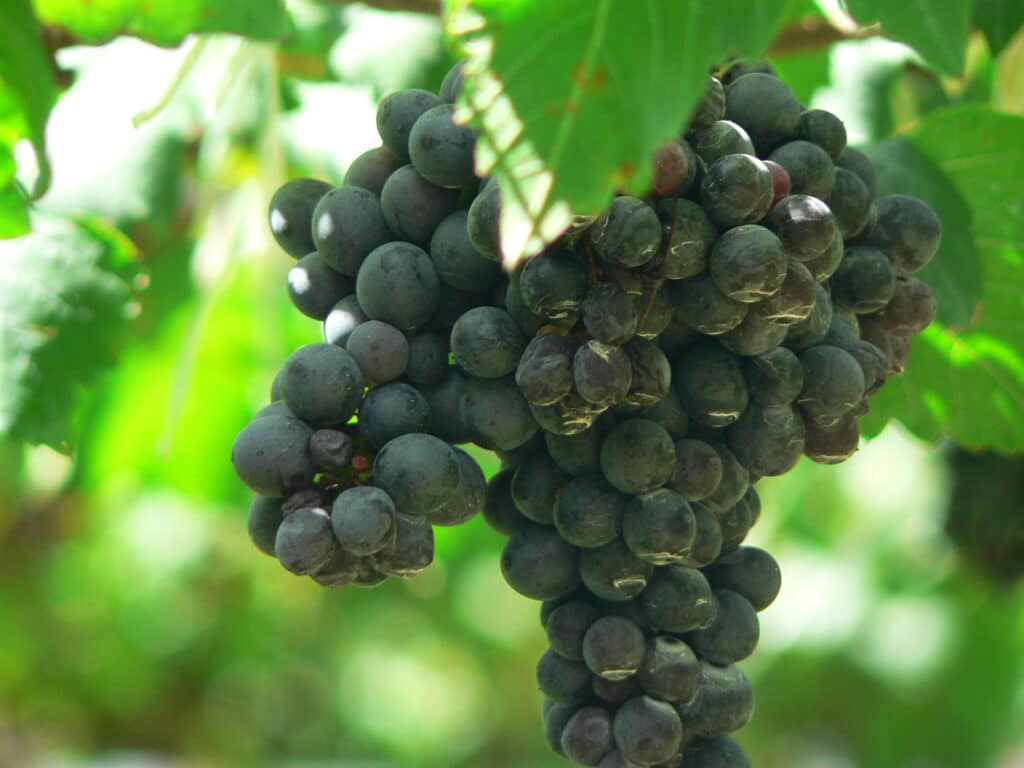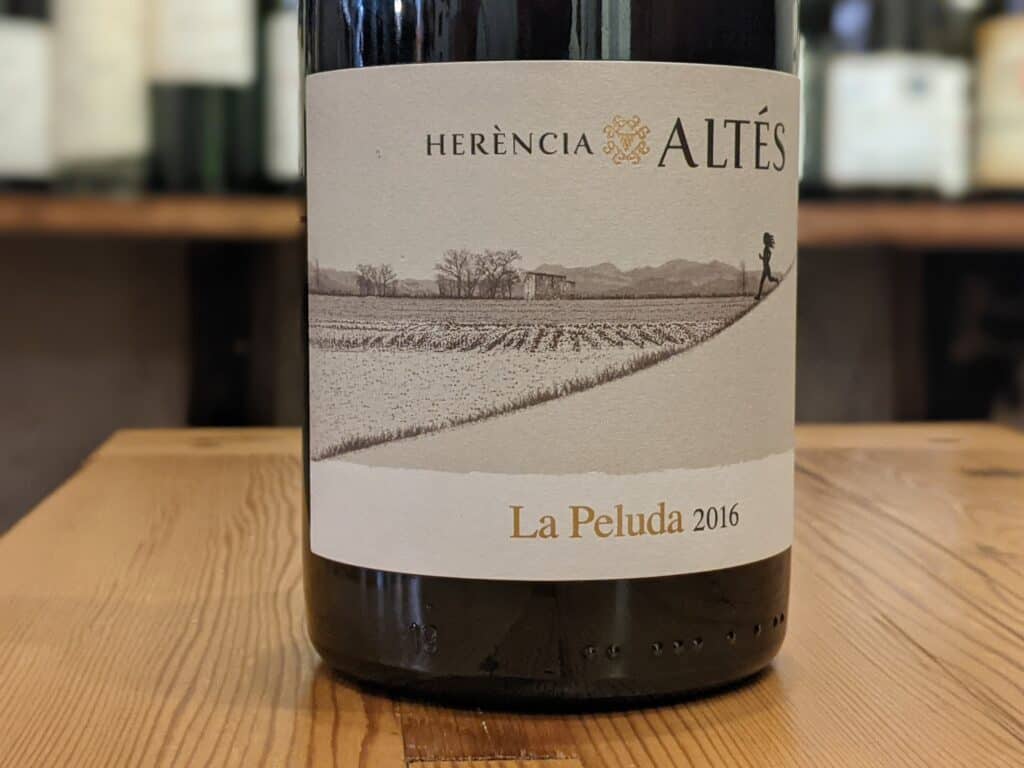- Writers Don’t Understand Tannin.
- What is Tannin in Wine?
- Our Original Article on Tannin
- What is Tannin? (The Original Article)
Writers Don’t Understand Tannin.
When I was a winemaker in California, the very first question a customer asked me was, “What is Tannin?” So many times, the question was posed when I first started teaching wine classes back in 2001.
I always gave a Pro-forma answer, even though I knew it was not precisely correct. I didn’t feel great about it, but it’s not easy to translate the science of tannin into a simple answer. So that was some severe week sauce on my part.
Why Wine Publications Get it Wrong
Sadly, all the major wine publications have fallen into the same trap. As of this writing, if you search for “What is tannin?” the entire first page of results is multiple articles containing incomplete and often incorrect information.
This isn’t intentional. Most wine writers come from a liberal arts background. There are only a few writers in the wine trade with a solid experience in STEM (science, technology, engineering, and mathematics).
A notable exception is Jamie Goode, who expressed his frustration in explaining tannin in this post. Here’s a quote in which he tries to explain tannin in simple terms:
Tannins are therefore defined functionally. They are polyphenolic compounds that bind to and precipitate proteins. It’s a slightly complicated picture: not all polyphenols can act as tannins, and not all phenolics that bind proteins are tannins, but it’s still a useful definition.
Jamie Goode, Wine Anorak
This is a great explanation, but will the average wine drinker understand this? Probably not.
The great sommelier-level magazine SevenFifty also attempted to address this issue:
Tannins are made up of two classes of phenols (a large and diverse category of plant compounds): The two classes are flavonoids and non-flavonoids. Tannins are formed from individual, monomeric (mono denotes “single”) flavonoids that have bound together to form polymers (poly means “many”)—a process called polymerization. Non-flavonoids play a role in tannin formation as well, but from the perspective of tasting and wine structure, flavonoids—specifically those that form condensed tannins—are the primary contributors.
Alex Russan, SevenFifty
Alex’s answer is well-written and correct, which is not surprising: he’s a winemaker and an author. You should check out his label Metrick; his Mourvedre is a killer. But, unfortunately, as qualified as he is, his insights into wine aren’t going to help the casual wine buff understand.

What is Tannin in Wine?
These days, I have a response that many sommeliers will be shocked by, but science is on my side. The reason all the answers to “What is tannin?” are either too simplistic or too complicated is quite simple.
We’ve all been asking and answering the wrong question. There are no tannins in red wine.
To be sure, there are tannins in grapes, just like in most plants. It will be bitter if you chew on any leaf, stem, or seed. That isn’t surprising or complicated. Drink tea? Eat Broccoli, Smoke Cigarettes? They all have bitter compounds, and those bitter compounds are tannins.
Fermentation + Tannins = Condensed Tannins
The big difference between grapes and wine is fermentation, and that (literally) changes everything. Yeast and bacteria tear apart nearly every single fiber of the grape. Nothing except a single acid (tartaric acid) survives the process intact.
Swirling in this vat of boozy destruction are three important compounds: proteins, seed tannins, and skin pigments. They are deeply attracted to each other and start forming chains. This three-way love affair results in a brand new molecule: the condensed-tannin.
This condensed tannin is very different from tannin, and it probably should have another name entirely to prevent this eternal confusion. But unfortunately, it’s also very confusing because not all condensed tannins look or act the same: different pigment combinations, tannin, and protein create very different outcomes.
What We Should Be Talking About Instead of Tannin
We are talking about bitterness. These condensed tannins bring a whole new set of flavors into the wine. They make red wine taste like cherry and plums instead of apples and grapefruit. They help make wines aged in oak barrels taste like chocolate. They do a lot of cool stuff.
I would describe tannin as the bitterness in red wine back in the day. But that’s not quite right, and it’s also not the question I answer anymore. So when someone asks, “what is tannin?” I now ask a question back: do you like red wine?
The people asking the question often don’t care about tannins: they want to know why they do not like red wines as much as their friends. That’s a question with an entirely different answer and one that most sommeliers and wine educators can answer effectively.
And if your friendly neighborhood sommelier can’t answer that question, they need to find another profession.

Our Original Article on Tannin
A lot has changed in the last decade! Initially published in 2007 under the title “What is Tannin?” our then-director wrote the following about wine education. At the time, it offered great information and advice. It is still a great read, and we recommend you tuck it in.
However, we fell into the same trap that so many other publications have since: never really answering the question. As many wine writers have pointed out, tannin isn’t an easy question to answer because it requires a certain level of scientific knowledge.
What is Tannin? (The Original Article)
Wine comes in a wide variety of styles. Depending on the winemaker’s skill, the grapes used, the weather, and even the type of soil where the vines are planted, wine can be easy to drink or contemplative; cheap or uber-expensive.
Wine is complex, and to determine which bottle to buy, one must first understand what makes wine what it is; from all its components, the most unique is tannins.
What are Tannins in Wine?
Browsing the web for wine information, you have surely stomped on the term: Tannins; often described as grip, structure, body, or weight, tannins are exclusive to red wines.
So, what are tannins? And where do they come from? How can you tell if a wine has tannins? And how do you know if they’re suitable to pair with your food? We did our best to explain all of this and more below.
What Else is in Red Wine?
Wine is mostly water. Up to 85% of a bottle’s content is H2O. Alcohol comprises almost the rest, leaving just about 3% for other stuff. What is this three percent made of? Sugars (imperceptible), acid, natural pigments, aromatic compounds, and tannins in red wine.
Acid is self-explanatory, and so are color compounds and aromatic molecules, but tannins are more complicated. Tannins give texture to the wine and, to some extent, bitterness.

Tannin in Plants
Tannins are plant matter. Every plant has tannins, especially wood, seeds, and bark. If you don’t identify tannins clearly, try chewing on grape seeds. The drying sensation in your mouth is tannins reacting with your saliva as they bond.
You’ll perceive a similar sensation when drinking black tea, biting apple skins, or snacking on pomegranate seeds. That’s all tannins, and tannin tastes bitter.
Tannins are present in the wine grape’s skins, on their seeds and stems. During fermentation, the grape juice leaches tannins from all these sources, becoming tannic.
Did you know oak barrels, usually used to age wine, also impart tannins to the liquid?
So, there you have it. That’s the definition of tannins and where they come from. But, of course, not all wines are as tannic, and that’s because not all wine grapes are alike. Some grapes have thicker skins and, therefore, more tannins.
What Wines Have High Tannin? Which Wines Have Low Tannins?
Tannic grapes include Cabernet Sauvignon, Cabernet Franc, Carmenere, Sagrantino Tannat, Nebbiolo, Nero d’Avola and Syrah.
Grapes with medium tannins, like Merlot or Malbec, will have a softer mouthfeel, and low-tannin wines made with Pinot Noir, Gamay, Grenache, or Barbera are simply velvety. So you see, you must know how tannic grapes are to tell if a random wine bottle is tannic or not.
The best way to train your palate is by opening a few bottles and concentrating on your mouthfeel. Once you understand which wines are tannic and which ones are smooth, you’ll feel confident and will be able to tackle more serious wine assessment knowledge.
Tannic wines are great with food, but not with all food. For example, tannins react oddly with fish oils and produce an unpleasant metallic taste. You should pair white wine with fish for this reason. On the other side, fatty fish, like salmon, sardines, or tuna can be paired with low-tannin wines like Pinot Noir. Full-bodied reds with considerable amounts of tannins are better reserved for red meat.
Tannins will respond to meat the same way they react to the proteins in your saliva, smoothening every bite and improving your dining experience. This is one of the benefits of tannins in wine.
Fatty meat needs more tannins since the fat coats your palate, and tannins help with that. Lean meat doesn’t need as many tannins, but it’s a matter of preference, like everything in life.
Cooking methods can also make certain foods more tannin compatible. Grilled food, even vegetables, chicken, or fish, will pair better with tannic reds, and a little smoke will help too. Coal-grilled meats are tannic wines’ best friends. You knew that already — now you know why; because of tannins.
Tannins are great for wine; they make it more concentrated and, therefore, age-worthy. Some of the most long-lived wines in the world are so tannic you have to wait up to ten years before being able to enjoy them; time mellows these gritty particles.
Are there Health Benefits?
Tannins are good for you, too; they are excellent sources of fiber and have good anti-oxidative properties. As if you needed more reasons to enjoy a glass of red once in a while.

This article was fascinating and very educational.l look forward to reading further articles of this nature. Thank you.